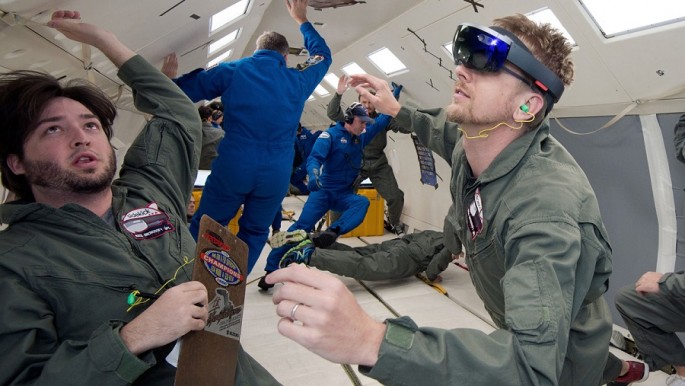Microsoft's HoloLens, the augment reality (AR) headset that it launched earlier this year, will be in the hands of NASA astronauts who travel to the International Space Station (ISS) on June 26, Sunday. The space agency announced that the AR headset will be used in a new project named Sidekick, as a virtual aid to the American spacemen.
Sidekick will have two modes of operation. The first one, termed "Remote Expert Mode," uses Skype to show a ground operator exactly what a crew member is viewing. It will create real-time guidance and draw notes into the environment of the crew member, to walk the astronaut through a task.
In the past, crew members only had voice and written instructions. The major upgrade allows people standing on Earth to have the same visual perspective as the astronaut.
The second mode is known as "Procedure Mode." This standalone process, which requires little training, displays holographic illustrations on top of objects that the space crew is interacting with, according to Vator News.
NASA said that the Microsoft HoloLens headsets could be important resources for deep space missions. Communication delays there make hard tasks even more complicated.
The AR headsets will highlight the goal of the Sidekick program, which is to provide ISS crews with on-the-spot assistance. U.S. astronauts will likely use them at this year's end.
Sam Scimemi, director of NASA's ISS program, said in a released statement that the HoloLens and other AR tech could be used in future space missions and help scientists working on the space station. A future manned mission to Mars could also benefit.
This is not the first time NASA has used HoloLens tech. Earlier this year it also announced its joint venture with Microsoft on the OnSight project, which will involve astronauts using the AR headset and holograms to conduct virtual work on Mars, according to iAfrica.
The Microsoft HoloLens AR technology differs slightly from virtual reality (VR). While VR is used for 3D movies and video games, AR puts virtual objects into a user's real world.
Total sales for AR and VR products are expected to skyrocket to $150 billion by 2020.



























